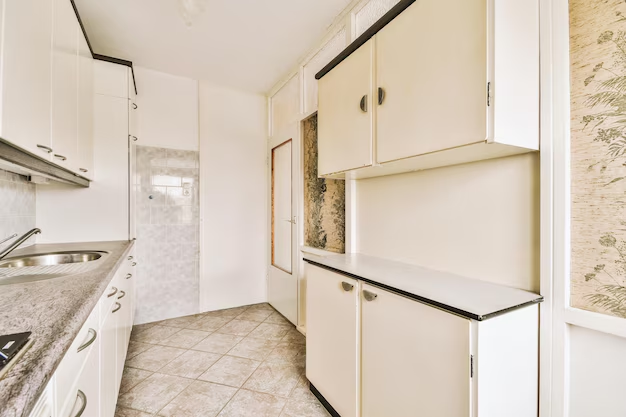Crafting the Perfect Refrigerator Cabinet: A Comprehensive Guide for DIY Enthusiasts
Designing and building your own refrigerator cabinet can transform your kitchen space, adding both functionality and aesthetic appeal. Whether you're looking to save space or create a cohesive design, this guide will walk you through everything you need to know about building a refrigerator cabinet from scratch. Let’s dive in!
Why Build a Custom Refrigerator Cabinet?
A custom refrigerator cabinet offers numerous benefits. First, it maximizes space, seamlessly integrating the refrigerator into your kitchen's layout. Second, it improves the kitchen’s aesthetics by providing a polished, uniform appearance. Finally, a custom cabinet can provide additional storage options, making it a practical choice for many homeowners.
Key Benefits:
- Space Optimization: Tailor-made to fit your specific kitchen dimensions.
- Design Cohesion: Matches with existing kitchen cabinetry for a uniform look.
- Additional Storage: Opportunities for added shelving or pantry space.
Understanding these benefits helps set the stage for the journey ahead. Let’s break down the process into manageable steps to ensure success.
Preparation is Key: Planning Your Cabinet
Before you start sawing and drilling, planning is essential. Here are the initial considerations:
Measure and Sketch
Accurate measurement sets the foundation for any successful cabinetry project. Here's how:
- Measure the dimensions of your refrigerator, leaving space for ventilation.
- Create a sketch of your ideal cabinet, considering height, width, and depth.
Select Materials
Choosing the right materials influences both the durability and look of your cabinet. Common choices include:
- Plywood: Strong and cost-effective.
- MDF: Smooth surface ideal for paint finishes.
- Solid Wood: Durable and aesthetically pleasing for a high-end finish.
Gather Tools and Supplies
Here’s a checklist to ensure you have everything you need before starting:
- Basic Tools: Saw, drill, measuring tape, and screwdriver set.
- Safety Gear: Goggles, gloves, and dust mask.
- Fasteners: Screws, brackets, and hinges.
- Finishing Materials: Paint, varnish, or wood stain, depending on your preference.
Step-by-Step Guide: Building Your Refrigerator Cabinet
Now, let's dive into the nitty-gritty of building your cabinet.
🛠️ Step 1: Construct the Frame
- Cut the Panels: Using your measurements, cut the side panels, top, and base from your chosen material.
- Assemble the Frame: Connect the panels using screws or nails. Reinforce corners with brackets for stability.
🛠️ Step 2: Create the Cabinet Doors
- Cut Door Panels: Ensure they match your frame dimensions.
- Attach Hinges: Fasten hinges to each door and test for smooth operation.
🛠️ Step 3: Add Storage Features
- Install Shelving: Opt for adjustable shelves to accommodate various items.
- Incorporate Drawers: Consider adding drawers for additional storage options.
🛠️ Step 4: Finishing Touches
- Sand Surfaces: Smooth out any rough edges or surfaces.
- Apply Finish: Choose between painting, staining, or varnishing for protection and aesthetics.
🛠️ Step 5: Install the Cabinet
- Position Cabinet: Carefully move the cabinet into place, ensuring a snug fit around the refrigerator.
- Secure to Wall: Use brackets to fasten the cabinet to the kitchen wall for stability.
Design Considerations for Your Refrigerator Cabinet
Design goes beyond just functionality; it’s about complementing the existing kitchen decor.
Color and Style Matching
Harmonize with Existing Decor by choosing a color and finish that matches or complements your current kitchen cabinets.
Ventilation
Don’t forget to incorporate ventilation gaps to ensure your refrigerator operates efficiently without overheating.
Handles and Hygiene
Choose sleek, easy-to-clean handles that enhance both functionality and style.
Common Challenges and Solutions
While building a refrigerator cabinet is rewarding, you may encounter challenges:
Uneven Surfaces
Solution: Use a level during assembly and adjust with shims as necessary.
Misaligned Doors
Solution: Adjust hinges and ensure screws are tightened uniformly for proper alignment.
Ventilation Issues
Solution: Rearrange panels to allow airflow or install vents.
Safety Considerations
Ensure a safe and efficient building process by adhering to these safety tips:
- Wear Protective Gear: Always use goggles and gloves.
- Mind the Cables: Keep power tool cables away from sharp edges or tripping hazards.
- Work in a Ventilated Area: Use masks when dealing with dusty materials or strong-smelling finishes.
Conclusion: Crafting Your Masterpiece
Building a refrigerator cabinet is a fantastic way to personalize your kitchen while enhancing its functionality. Whether your goal is to maximize your space or to ensure a cohesive design, a custom cabinet can achieve it all. By carefully planning and executing each step, you will not only gain a unique piece but also enjoy the satisfaction of a DIY success. ❤️
Quick Recap 🎯
- Plan Wisely: Accurate measurements and the right materials are crucial.
- Design Thoughtfully: Match existing decor and ensure proper ventilation.
- Execute with Precision: Follow each step closely for a flawless finish.
Embrace the challenge with confidence, knowing that your efforts will lead to a stylish and practical addition to your home. Happy building! 🛠️👷♂️
